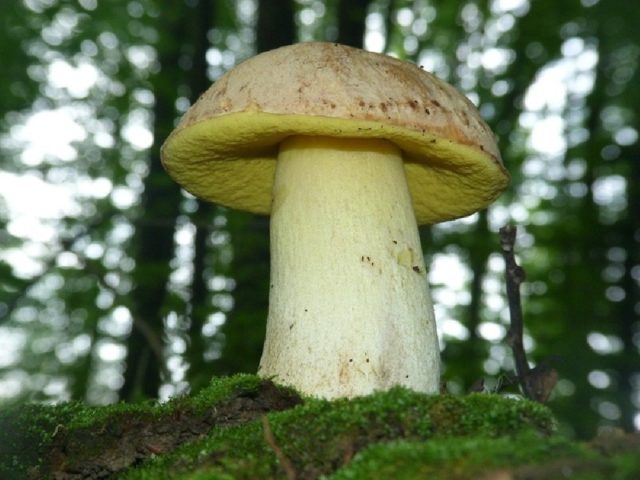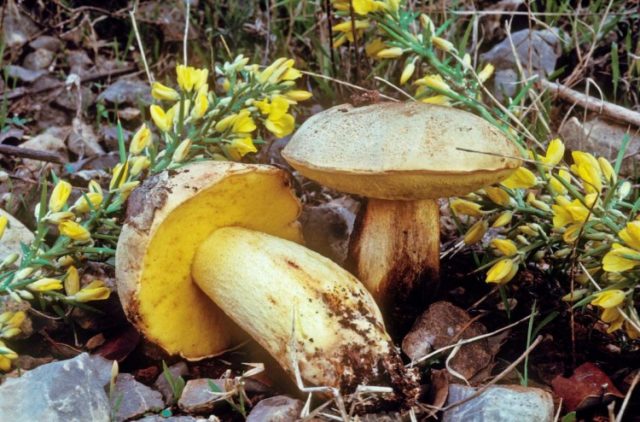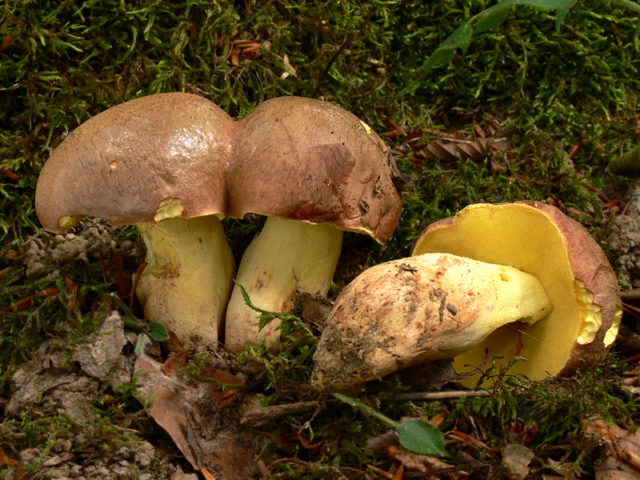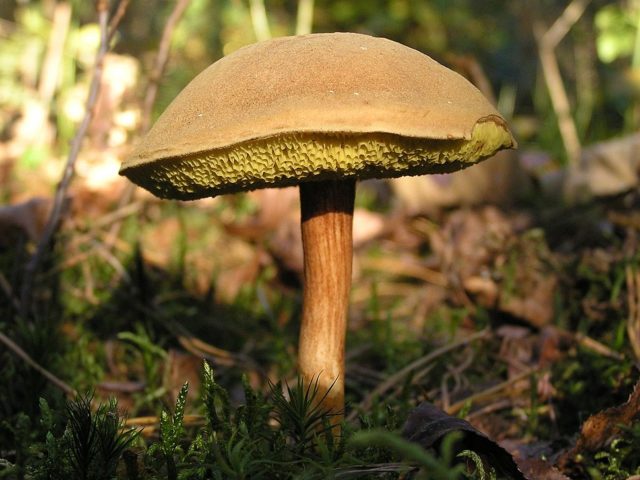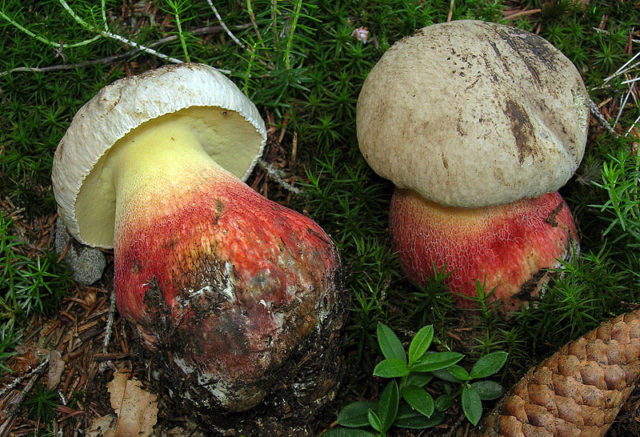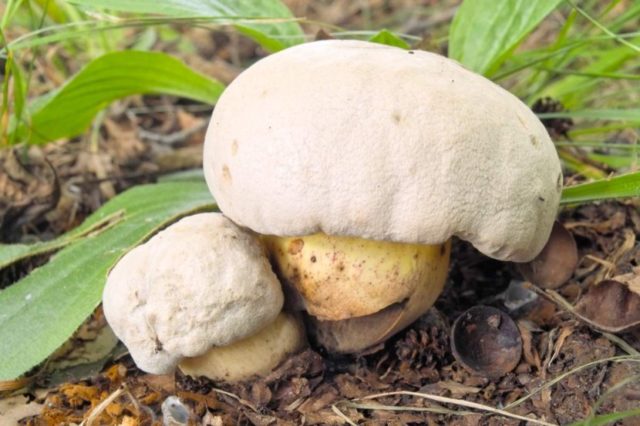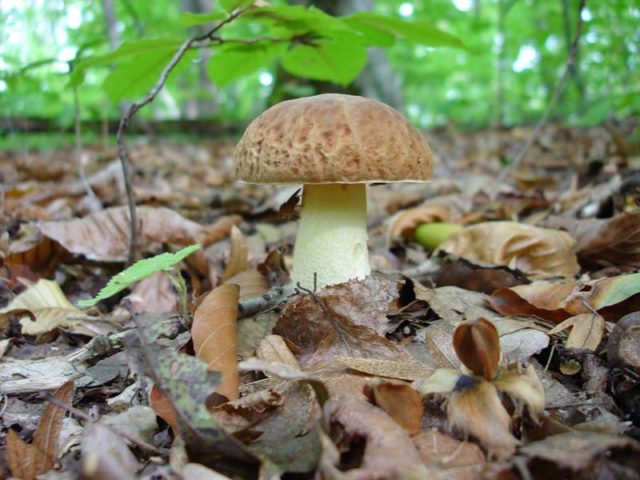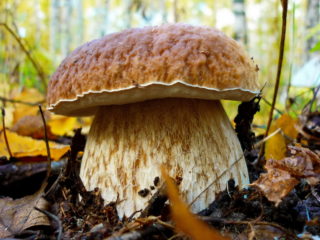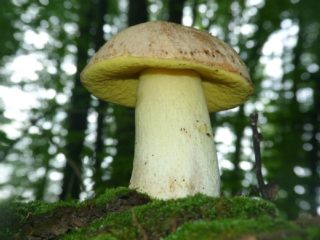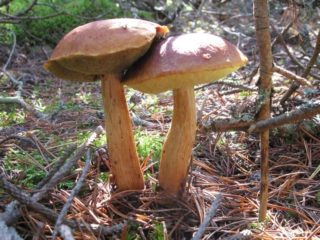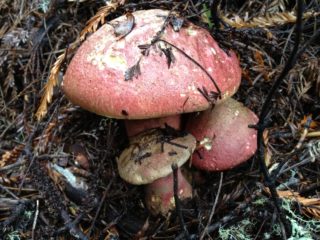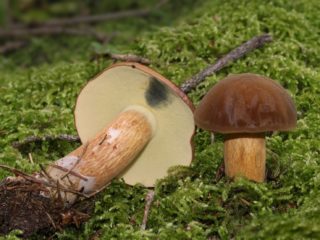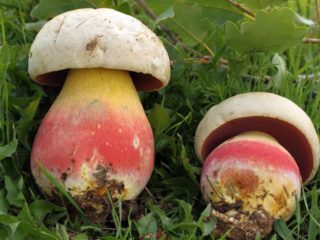Content
The half-white mushroom is a good edible species and is also called the half-white boletus, yellow boletus, or half-white boletus. It is beneficial for the body, but before collecting you need to carefully study the characteristics of the species and its photographs in order to avoid mistakes.
What do semi-white boletus mushrooms look like?
The semi-white boletus has a fairly standard structure for a boletus. At a young age, his cap is convex and half spherical, later it becomes flattened and cushion-shaped, and reaches 15 cm in diameter.
The cap is covered with a thin but tightly fitting skin, smooth to the touch and matte, but often wrinkled in adult fruiting bodies. Usually dry, but in rainy weather mucus may appear on it. The color of the semi-white mushroom Boletus Impolitus can be clay or light brown; the lower surface of its cap is tubular and yellowish, with small pores that acquire an olive tint with age.
The leg can rise up to 15 cm above the ground, reaching about 6 cm in girth. In its lower part there is a noticeable thickening. The color of the leg is predominantly beige, being lighter in the upper part and much darker in the lower part and sometimes with a reddish tint. There are also villi at the bottom of the stem, but there is usually no mesh pattern on its surface.
If you break a semi-white mushroom in half, the flesh will be dense, whitish or lemon-yellow, with a neutral or weak carbolic odor. The pulp does not change color due to contact with air - this is a characteristic feature of the semi-white boletus.
Where do semi-white boletes grow?
The semi-white boletus belongs to the category of heat-loving species that prefer moist soils. You can meet it in Russia mainly in the southern regions and in the Central region. Usually the semi-white mushroom grows in mixed and deciduous forests under hornbeams, beeches and oaks; you can rarely see it under coniferous trees.
The period of maximum fruiting occurs at the end of summer and beginning of autumn. The first mushrooms appear already in May, but they grow in the largest quantities from mid-August to October.
Are semi-ceps mushrooms edible or not?
Although semi-white boleth does not have a very pleasant odor, after initial processing this odor disappears.From the point of view of edibility, boletus of this species is completely suitable for food consumption. According to many mushroom pickers, it is in no way inferior to the porcini mushroom, and even surpasses it in taste.
False doubles
Experienced mushroom pickers can easily distinguish the half-white bolet from other species. However, beginners may confuse boletus with similar varieties, some of which are edible and inedible.
Porcini
If you lack experience, you can confuse a semi-white mushroom with an ordinary white one - the varieties are almost identical in size and structure. But there are also differences - the cap of a white boletus is usually darker, brown in color without any lemon color. The stem of the white boletus is mostly beige, darker at the bottom and lighter towards the cap.
The varieties can also be distinguished by smell. The weak carbolic aroma present in the semi-white one is not typical for the white bolet. Both types are completely edible, but require preliminary preparation - short soaking and boiling.
Maiden's boletus
Another edible counterpart of the semi-white mushroom is the maiden boletus, which is occasionally found in deciduous forests of the southern regions. The varieties have the same structure of caps and legs, are similar in size and color.
But at the same time, the maiden boletus is darker - yellow-brown, red-brown or brown-brown in the cap. The stem of the maiden mushroom is lemon-yellow, brownish at the bottom, with a pronounced mesh, but usually it is thinner than that of the semi-white one.
Green moss
The edible mushroom has a certain resemblance to the semi-white boletus - its cap is the same shape, cushion-shaped in adulthood and convex in young fruiting bodies. But the color of the green flywheel is olive-yellow or olive-brown, and although its leg is high, it is very thin, only up to 2 cm in diameter.
You can also distinguish a green flywheel if you press on the cap or cut it, the flesh will quickly turn blue. The aroma of green boletus is reminiscent of dried fruit and is quite pleasant, in contrast to the smell of half-white boletus. Although the bottom layer of the cap is tubular in both species, the green flywheel has much larger pores.
Beautiful boletus
Sometimes the semi-white boletus can be confused with the inedible beautiful boletus - a mushroom of similar shape and size. But the differences in the double are very noticeable - its hat has an olive-gray tint.
The leg of a beautiful boletus is thick and dense, club-shaped, while its upper part is lemon-yellow, the middle is bright red, and closer to the base the leg becomes red-brown. Such transitions of shades on the stem are not typical for the semi-white mushroom, although both species have a light mesh on the stem. The cut flesh of the inedible beautiful boletus quickly turns blue.
Rooting boletus
Another inedible species, the root boletus, has a certain resemblance to the semi-white mushroom. Although the varieties are similar in size and structure, the difference between them is quite large.
The cap of the root bolet is light gray, usually much lighter than that of the half-white.The legs of the two species are very similar, but in the rooting boletus, the base of the leg is usually brownish-brown or with greenish-blue spots. When cut, the inedible boletus acquires a bright blue color.
Collection rules
It is best to go to the forest for the semi-white boletus in mid-August. From this time until mid-autumn, the mushroom bears fruit most actively. The most rapid growth of fruiting bodies usually occurs after rainy days.
You need to choose clean forests for collection, located away from industrial facilities and major roads. Since mushroom pulp quickly accumulates toxic substances, fruiting bodies grown in contaminated areas can be hazardous to health. It is better to collect young semi-white bolets; they are denser in structure, pleasant in taste and also contain a minimum of toxic substances from the air and soil in their pulp.
How to cook porcini mushrooms
The semi-white mushroom is considered a universal mushroom - it can be boiled, fried, pickled, salted and dried for long-term storage. Before any processing method other than drying, the fruiting bodies must be cleaned of forest debris, trimmed if necessary and soaked for an hour to remove slight bitterness from the pulp. Boletes are boiled for about half an hour in salted water; the broth must be drained, as toxins may remain in it.
Marinating semi-white bolet
A popular cooking method is marinating the semi-white mushroom. The recipe looks very simple:
- 1 kg of fruiting bodies is boiled for half an hour;
- the broth is drained, and the mushrooms are placed in a colander;
- in another bowl, boil water with 2 large spoons of salt, 1 large spoon of sugar, 3 buds of cloves and 5 peppercorns;
- after boiling, pour 100 ml of vinegar into the marinade and add boiled mushrooms;
- After another 15 minutes, remove the mushrooms and marinade from the heat.
After this, prepared sterile jars are laid with onions along the bottom, mushrooms are placed on top and poured with hot marinade. The containers are tightly closed and stored in the refrigerator after cooling.
Frying semi-white mushroom
Another popular recipe for semi porcini mushroom is sautéing. In a hot frying pan, greased with vegetable oil, fry 200 g of chopped onions until transparent.
After this, pre-boiled and chopped semi-white mushrooms are added to the onions, after 10 minutes the mixture is salted and peppered to taste, and after another quarter of an hour, removed from the stove. Fried boletus mushrooms can be served with boiled potatoes, porridge and other dishes.
Conclusion
The semi-white mushroom is a fairly tasty edible mushroom that requires minimal processing. If you carefully study its description and photo and correctly recognize it in the forest, it will be able to decorate many culinary dishes.
